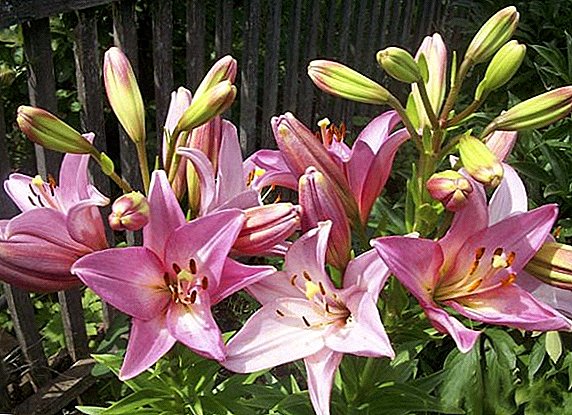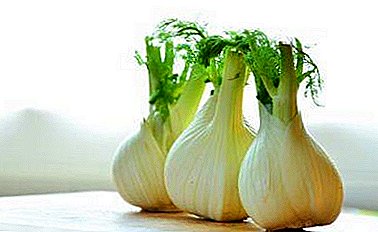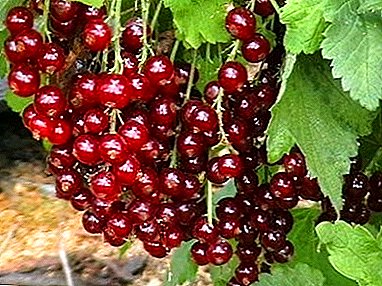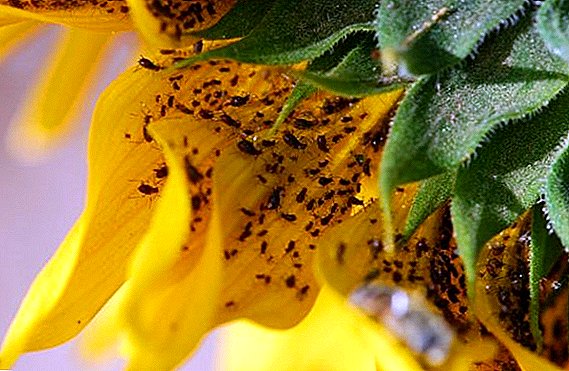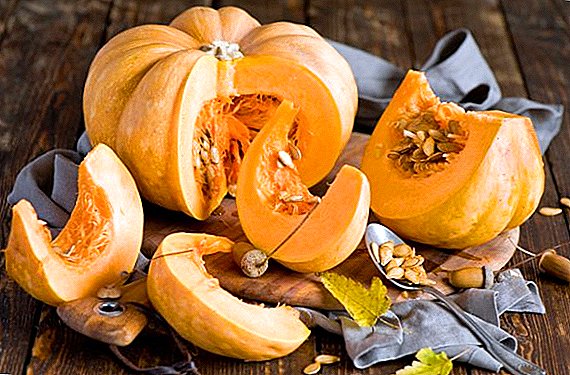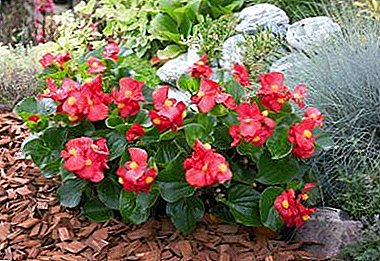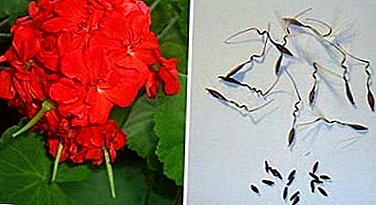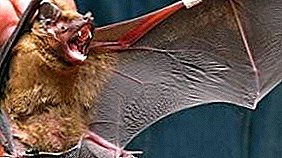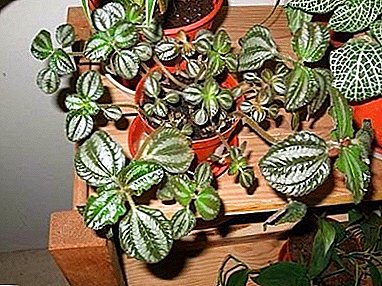
"Pile Cadier" is a popular houseplant that is valued by growers for unusual leaves with silver stripes.
Growing it is a snap; even a beginner can handle it.
Flowers are small, almost imperceptible against the background of large bright leaves.
general description
Currently, there are approximately 400 different species of "Pilea"that grow in tropical areas of the planet - South America, Southeast Asia, Africa. The name originated from the word pileus, which translates from Latin as “hood”.
"Piley Cadier" is a nettle plant. Its permanent habitat is Indochina. It grows strictly vertically upwards, and will be pulled out until the tip is pinned. In the conditions of an apartment it usually becomes up to 30 cm in height. The leaves are wide or oval, up to 8 cm long and up to 5 cm wide. They are shiny with an uneven surface, on which two silver stripes clearly stand out.
“Cadiere Piley” blooms in small white flowers that are collected in large inflorescences, stretching out from the leaf axils.
Reference! There is a hybrid type of this flower - Minima, which is characterized by a small form, not growing more than 10 cm.
A photo
The photo shows the plant “Pada Cadier” with proper care at home:




Home care
The flower does not require special care for itself and can easily be in simple apartment conditions. More details about the care, reproduction and maintenance of the plant "Pilea" can be found here.
Actions after purchase
 "Pilea" is sold in stores all year round.
"Pilea" is sold in stores all year round.
When choosing, it is best to pay attention to small, still undegraded plants with a bright pattern on the leaves.
Houses for the pot chosen pritennoe place - the flower can not be put in direct sunlight.
After 1-2 weeks, after acclimatization of the “Piley”, it is necessary to make a transplant to a new land.
In this case, it is best to do this not with transshipment, but carefully cleaning the existing technical soil.
Pruning
“Piley Cadier” is growing very fast. In order for the flower to not lose its appearance and acquire the shape of a bush, you need to regularly pluck the tops of the shoots, and this should be done every 2-3 weeks. This process transfers the plant very easily.
In the spring, it is recommended to cut all the shoots to a length of 8-10 cm. This should be done with sharp scissors, just above a pair of leaves.
Watering
The plant is not moisture loving.and it is not the land drying the earth that is harming it, but an excessive gulf. It is necessary to water plentifully and regularly, well settled water. In this case, it is absolutely impossible to prevent stagnation of moisture in the soil. It is best to wait between treatments until the ground dries a little.
Important! Especially dangerous is the Bay of Pyla in the winter, when the flower is in a period of rest.Then the moisture is not actively consumed, and because of the waterlogging of the soil, root rot and plant death may occur.
The recommended frequency of watering in the winter - every 7 days.
Landing and ground
"Pile" can be placed in the same pot with other plants, making compositions.
It will grow well with small-leaved species of ferns, Peremomia, Fittonii and others.
All these plants require almost the same care.
Important! You can not plant to the "Pyla" large-leaved plants with strong growth - they crush it in a pot.
 "Piley Cadier" loves humus soil.
"Piley Cadier" loves humus soil.
It can be bought ready-made at the store, or you can make it yourself, taking at least one peat land and sand, and two measures of leaf and humus soil each.
The use of drainage is necessary to prevent the stagnation of excess moisture in the soil. The soil acidity is slightly acid (5.0–6.0) or neutral (6.0–7.0). It grows well in hydroponics.
Transfer
Transplantation must be done annually, in early spring. When choosing a pot, it is necessary to take the same, or a little large in volume and a depth of 7.5-10 cm - the root system of Pyla is not very developed, it grows more in breadth than down.
The transplant process is well combined with pinching, as well as with trimming. The resulting cuttings can be rooted, and already this year to get a new large plant.
Growing from seed
Pilea is rarely grown from seed.This is usually done to get a new hybrid. The best time for sowing is early spring - this allows the sprouts over the summer to stretch and get stronger.
Seeds are sown on the surface of a mixture of sand, peat and leaf ground, not sprinkling them on top. To facilitate courtship, you can sow in a row. Then the container is closed with transparent plastic or glass, and placed in a dark place.
The required temperature is + 18-24 degrees. While growing the soil, it is necessary to keep it moist and check that there is no overwetting or drying.
Germination occurs within 14-30 days. After the appearance of sprouts, the glass is raised for half an hour daily for airing.
Breeding
 Reproduction "Piley" cuttings produced in any month of the year.
Reproduction "Piley" cuttings produced in any month of the year.
The resulting pruning shoots, having a length of 7-10 cm, rooted in water, sand or loose soil.
To do this, they are placed in pots, covered with a jar to create the conditions of a mini-hothouse.
However, the leaves of the process must not reach the walls. For better decoration, several cuttings can be placed in a single container.
A pot with a handle is placed in heat, where there is no exposure to direct rays. After the roots appear, the jar is removed, and throughout the week the flower becomes accustomed to the changed conditions. Then the container is rearranged in a convenient place.
The grown cuttings are transplanted into individual pots, after which they are looked after as adult plants.
Temperature
“Piley Cadier” grows at a temperature of + 20-24 degrees. In winter, cooler air is allowed, however, it is not necessary to allow a significant decrease - even at +15 degrees the flower will shed its leaves.
Important! No need to expose the plant to temperature changes - drafts, especially in the winter, are dangerous.
Lighting
The flower loves diffused light, protected from the direct sun. The optimal place for a pot is windows to the east or west. If it is on the south side, then the flower should be placed at a distance from the window, or cover it with paper, a translucent cloth. If there is a lack of light, the bright color of the leaves may disappear.
In summer, you can put the plant in the open air., but also with protection from direct sun.
Diseases and pests
 The plant most often becomes infected with spider mites, thrips, scutes, and mealybugs.
The plant most often becomes infected with spider mites, thrips, scutes, and mealybugs.
The main problem of this plant is that pests are sometimes very difficult to detect on motley colored leaves.
A sign of the presence of spider mites is the appearance of a thin whitish web on the leaves.
To get rid of it you need to wash the plant with a sponge and soapy water. If the infection is running, then after that you can spray the flower with insecticides.
When thrips or mealybugs appear, sticky shiny highlights appear on the surface of the leaves.in which the black fungus then settles. To combat these pests, the plant is first of all washed with soap and then treated with chemicals.
A sign of scythes is the appearance of convex red "plaques"which are the shells of this pest. To combat it, the leaves and shoots are brushed with soapy water, with which the insect is mechanically removed.
- "Monetolist";
- Peperom-shaped.
"Piley Cadier" - one of the types of "Piley", which stands out due to the variegated color of the leaves. It does not require special care, however, it is important not to expose the pot to direct rays, and not to fill the soil. In order to form a beautiful view, the flower should be regularly cut and plucked tops of the shoots.


